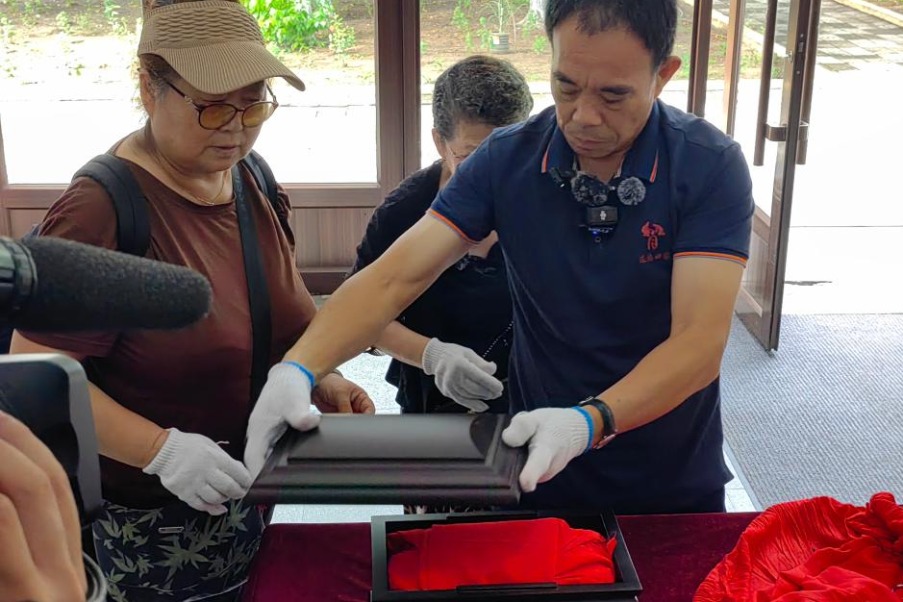New rocket marks debut mission of launch center


China's carrier rocket fleet has expanded further, as the newest type in the Long March family, the Long March 12, made its debut flight on Saturday night from Wenchang, Hainan province.
The flight also marked the first mission of the Hainan International Commercial Aerospace Launch Center, the nation's first spaceport dedicated to facilitating commercial operations.
As a large crowd of spectators gathered at the coastal launch complex, four liquid oxygen-kerosene engines on the rocket's first stage roared with dazzling flames at 10:25 pm, and the rocket rose into the night sky from the No 2 launchpad at the new space complex.
After a short while, two experimental satellites separated from the rocket and entered their preset orbit, marking the success of the launch mission.
Designed by the Shanghai Aerospace System Engineering Institute, the Long March 12 is the 22nd member of the Long March family, the backbone of China's space sector, and the 17th in the operating fleet.
The institute is part of the Shanghai Academy of Spaceflight Technology, which belongs to the State-owned industry conglomerate China Aerospace Science and Technology Corp.
The Long March 12 is the first Chinese rocket with a diameter of 3.8 meters. Most Chinese rockets have a diameter of 3.35 meters, a standard width set in the 1960s due to rail transportation factors.
At 62.6 meters tall, the two-stage model is the second-tallest among all Chinese rockets, exceeded only by the 62.8-meter Long March 5.
The vehicle is propelled by engines fueled by liquid oxygen and kerosene and has a liftoff weight of more than 430 metric tons. It is capable of transporting spacecraft with a combined weight of more than 12 tons to a low-Earth orbit, or 6 tons of satellites to a typical sun-synchronous orbit at an altitude of 700 kilometers, according to the Shanghai academy.
The new model will effectively improve China's capability to send spacecraft to a sun-synchronous orbit and deploy satellite networks in low orbits, it noted, adding that research and development started in May 2020 and finished in June this year.
Xie Li, a senior designer of the new model, said the rocket features new technologies and equipment.
"It is the first Chinese rocket equipped with an automatic ignition-malfunction detection system.... After the engines are ignited, the system will detect whether the engines are functioning well, and if the result is good, the system will unleash the hold-down clamps, allowing the engines to reach full power to lift off.
"When the rocket begins to fly, the system will continue performing real-time checks on the vehicle's condition, and if any anomaly occurs, the system will take necessary measures such as to replan the trajectory to make sure the satellites can be deployed into their preset orbit," he said.
Another advantage is that the new type needs a short time for prelaunch preparations at the service tower, which means that the launch facility can serve more space missions in a given time, thus enhancing the spaceport's operational efficiency, according to the designer.
In addition, the fuel tank of the rocket's second stage is made of a cutting-edge aluminum alloy that boasts lighter weight and better strength.
"Compared with other types of aluminum alloy used on previous Long March-series rockets, the new material is up to 15 percent lighter in structural weight and 28 percent higher in tensile strength," Xie said.
Regarding the 3.8-meter diameter, he said that a wider body enables the rocket to have four engines on its first stage, while the 3.35-meter-wide models have two. Moreover, being wider means the rocket can contain more propellants. All of these give the new model a greater carrying capacity, he added.
The Long March 12 mission marked China's 59th space launch this year and the 548th flight of the Long March family.
- Over 2,000 teams compete in AI-themed cybersecurity contest
- China eyes deeper industrial cooperation with ASEAN
- China launches fund for preserving Japanese germ warfare site, promoting peace education
- Women benefit extensively from China's poverty alleviation campaign: white paper
- Women in China benefit from more comprehensive, reliable, equitable social security: white paper
- Xinjiang launches new power line, boosting green energy transport




































